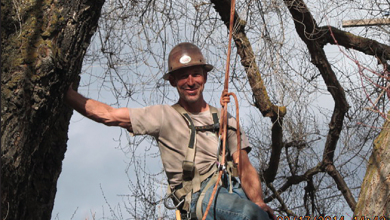Pruning 101…
To prune, or not to prune, that is the question! A good one and often asked, it really depends on what the expected outcome of said “pruning.”
Dead branch removal down to about 3/4” or so, what I deem as “hazard dead” is fine for areas under the “hazard” that sees frequent use, i.e. patios, walkways, sidewalks, etc. Removing dead branches down to the last twig isn’t necessary outside a formal setting, unless you just want that “perfect” look. Pruning to maintain a specific size and form, i.e. bonsai, or fruit production should be performed every year without exception. Evergreen broadleaved trees such as madrone and magnolias almost never need live material removed unless done over time, and then only by someone that has many years of experience with those types of trees, they are very easy to screw up and almost impossible to repair when you do screw them up!
End weight reduction pruning can be very complicated depending on species and location/exposure of the tree and amount of material removed to lessen the likelihood of limb failure. It should be stressed that follow up pruning in the years after end weight reduction pruning is just as, if not MORE important than the initial procedure. Some trees like to have a nice full crowded canopy such as crabapples and honeylocust and should be left that way with minimal “thinning.”
There is a term called “wind sailing” that is used mostly in the Portland and Seattle areas that just defy logic on its very name. The idea is to thin the canopy to let the wind through with a reduced resistance and thereby minimize blowdown or total tree failure. This is just malarky in my opinion, and about the only result one can expect from “thinning” a conifer’s canopy will be many more barfed limbs, as the wind has minimum diffusion throughout the canopy and just whips the hell out of each individual limb that used to share the brunt of the force of the wind.
Pines, Spruces, Cedars, Cypress, Doug Firs, Redwoods, True Firs, Cryptomeria, etc. will literally tear themselves apart in the wind, when over thinned.
Pruning to remove broken limbs is OK on some trees, and on some trees removal of every cracked or broken limb would leave very little canopy remaining! There are trees in town that have literally tens, and maybe even a hundred broken/cracked/split limbs throughout the canopy, but because they have never been overpruned, they are just fine the way they are! The interlocking puzzle of limb structure has everything locked in place, the tree is happy, and life goes on.
Lifting or raising any tree canopy should be kept to a minimum and while you gotta do what you gotta do, the tree would much prefer to have as many limbs touching Mother Earth as possible…
It is my professional opinion based on experience, that the most important time to prune a tree would be the first ten years of the tree’s life! Building a solid structure can’t possibly be done when the tree nears maturity, that horse done left the barn as they say.
The biggest, best, oldest, coolest trees on the planet have had very little, if in fact ANY, pruning and are doing just fine, thank you!
There are of course many ornamental trees that just MUST be regularly pruned as a course of maintenance. These include but are not limited to Willows, Elms (especially Siberian and Chinese Evergreen Elms) London Plane, Flowering Pear and Flowering Cherry, Modesto Ash and Liquidambar (Sweetgum).
I am an Oak guy for a reason, they just make sense! Prune the hazard dead out every decade or so and that’s about it, simple no?
Spring is here, the best time of year!
As always, plant high and often…


